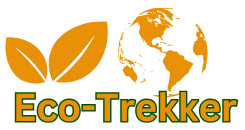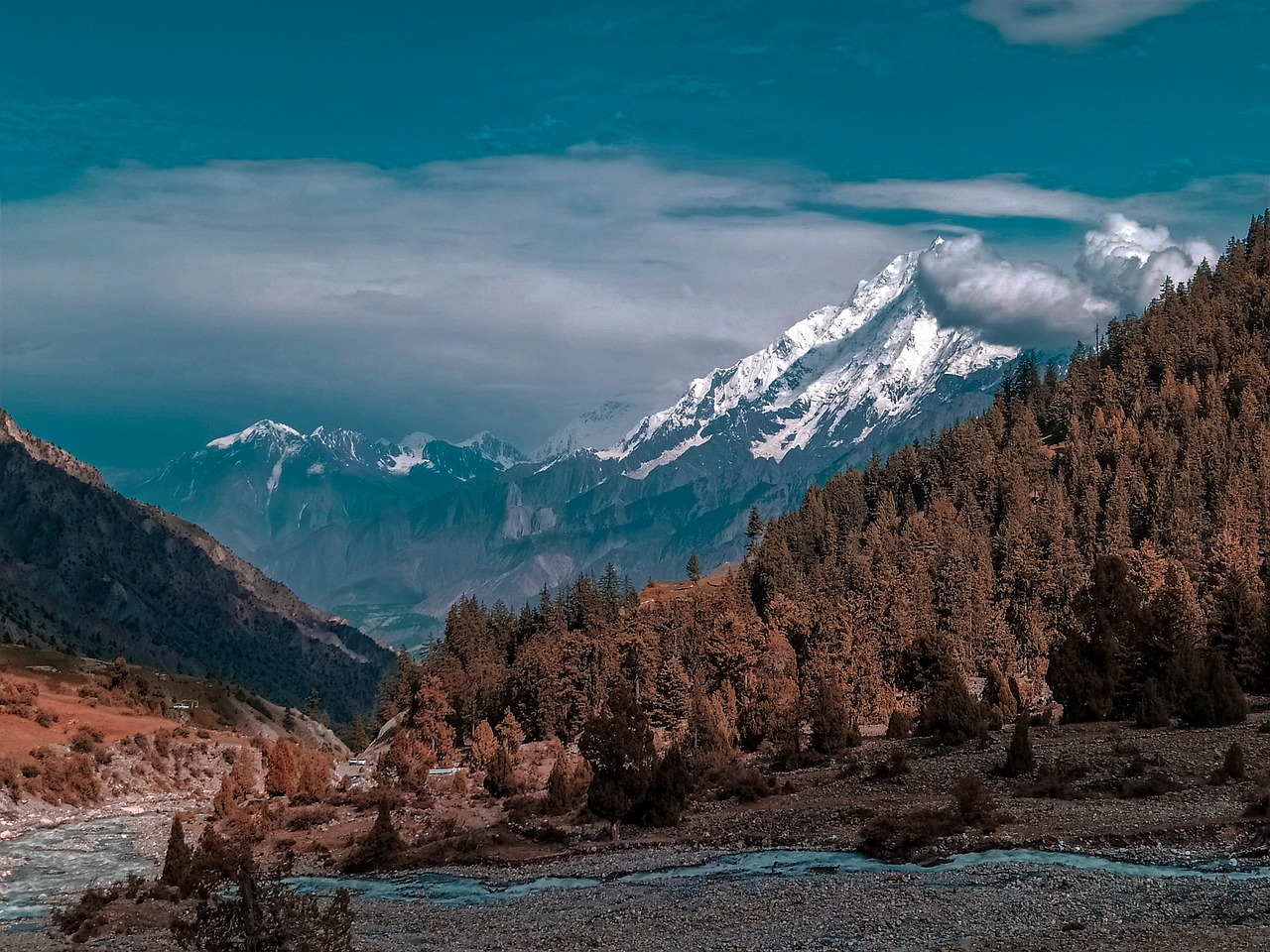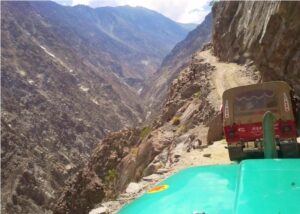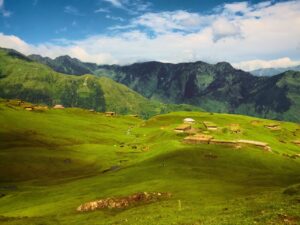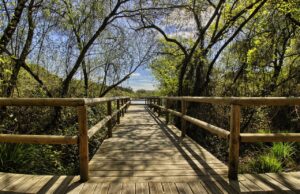Introduction
What are the environmental issues in Gilgit-Baltistan? This question is becoming increasingly important as this breathtaking region, known for its towering mountains, glaciers, and untouched natural beauty, faces mounting ecological challenges. While Gilgit-Baltistan is often viewed as a pristine paradise, it is quietly grappling with the effects of climate change, deforestation, water scarcity, pollution, and the loss of biodiversity. As tourism and development expand, so does the strain on the region’s fragile ecosystems. In this blog post, we’ll take a closer look at the major environmental issues in Gilgit-Baltistan, explore how they affect both local communities and travelers, and discuss how sustainable tourism can play a vital role in preserving the natural beauty of this remarkable part of Pakistan.
Table of Contents
1. Climate Change and Glacial Retreat
Gilgit-Baltistan is often called the “Third Pole” because it holds some of the largest and most important glaciers outside the Arctic and Antarctic regions. These glaciers are a crucial water source for millions of people in Pakistan and beyond. However, the region is now facing a serious environmental crisis: climate change is causing these glaciers to melt at an alarming rate.
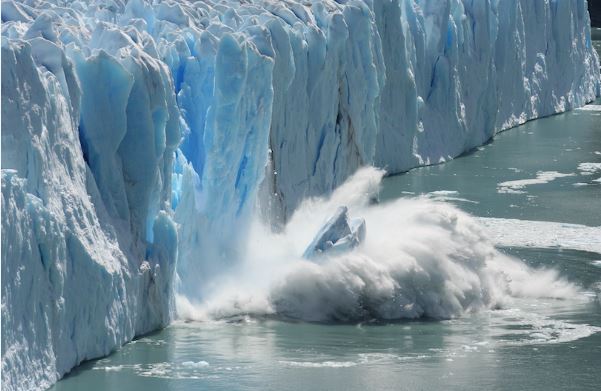
Rising Temperatures in the Mountains
In recent years, temperatures in Gilgit-Baltistan have been steadily increasing. While this might not seem dramatic on a global scale, even a small rise in temperature can have a huge impact in mountainous regions. The delicate balance of snow and ice is easily disrupted, and glaciers begin to retreat when the melting rate exceeds snowfall accumulation.
According to climate experts and local observations, the Karakoram, Himalaya, and Hindu Kush ranges have experienced significant warming over the past few decades. This has accelerated the melting of major glaciers such as the Biafo, Baltoro, and Siachen.
Short-Term Water Surplus, Long-Term Water Crisis
When glaciers melt faster than usual, they release more water into rivers and streams. In the short term, this may appear beneficial, especially for farming and hydroelectric power generation. However, this increased water flow is not sustainable. Once the glaciers shrink beyond a certain point, the water supply will drop sharply, leading to long-term shortages.
Communities that depend on glacier-fed rivers like the Indus, Hunza, and Gilgit are particularly vulnerable. Agriculture, drinking water, and energy production all rely on these sources. Without urgent action, the region could face serious water insecurity in the future.
The Threat of Glacial Lake Outburst Floods (GLOFs)
Another dangerous consequence of glacial retreat is the formation of glacial lakes. As ice melts, water pools at the base of glaciers or in valleys where it didn’t exist before. These lakes are often dammed by loose ice or rock, which are unstable and can burst under pressure. When this happens, it triggers a Glacial Lake Outburst Flood (GLOF) — a sudden, powerful flood that can destroy anything in its path.
In recent years, several GLOFs have occurred in Gilgit-Baltistan, causing damage to roads, homes, farmland, and even loss of life. With climate change continuing to accelerate, scientists warn that these types of floods will become more frequent and severe.
Impact on Tourism and Local Communities
Climate change and glacial retreat don’t just affect the environment — they also impact the local economy and way of life. Many people in Gilgit-Baltistan depend on tourism, farming, and small-scale hydropower projects. If glaciers continue to disappear, there will be less water for crops, less energy from hydropower, and fewer tourists visiting the once-icy landscapes.
Additionally, changing weather patterns, unpredictable snowfall, and increasing natural disasters make it harder for local communities to plan and adapt. Traditional knowledge passed down through generations may no longer be effective in dealing with the new realities of climate change.
2. Deforestation and Loss of Biodiversity
Gilgit-Baltistan is one of the most ecologically diverse regions in Pakistan, with stunning alpine forests, rare wildlife species, and rich vegetation spread across its valleys and mountain slopes. However, the region’s forests and ecosystems are under increasing threat due to human activity, especially deforestation and the resulting loss of biodiversity. These environmental problems not only disturb the natural balance but also put the region’s future sustainability at risk.
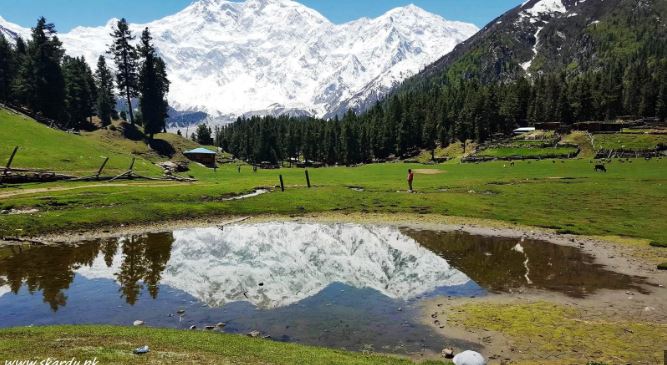
Forests Under Pressure: Causes of Deforestation
The forests of Gilgit-Baltistan — including coniferous trees like pine, juniper, and fir — are essential for maintaining environmental health. They help regulate water flow, prevent landslides, support biodiversity, and absorb carbon dioxide from the atmosphere. But despite their importance, these forests are shrinking fast.
Illegal Logging and Wood Harvesting
One of the leading causes of deforestation in Gilgit-Baltistan is illegal logging. Wood is widely used for construction and as fuel for heating and cooking, especially in remote villages where access to electricity or gas is limited. In winter, the demand for firewood spikes, putting further pressure on local forests.
Although there are laws in place to protect forests, enforcement is often weak. Lack of awareness, corruption, and poverty drive people to cut down trees illegally, without replanting or considering long-term consequences.
Infrastructure Development and Urban Expansion
The increase in infrastructure development — such as roads, hotels, and housing to support tourism — also contributes to deforestation. While tourism is an important part of the region’s economy, unplanned construction can lead to the clearing of forested land, soil erosion, and destruction of habitats.
Disappearing Wildlife: Impact on Biodiversity
As forests disappear, so do the animals and plants that depend on them. Gilgit-Baltistan is home to a wide range of species, many of which are rare or endangered. These include:
- Snow leopards – one of the most iconic and threatened predators in the region.
- Himalayan brown bears – found in the Deosai Plateau, with a dwindling population.
- Markhors and ibexes – wild mountain goats that face habitat loss and poaching.
- Rare birds – including falcons, eagles, and migratory species that rely on forest cover.
Deforestation fragments these animals’ natural habitats, making it harder for them to find food, mate, or migrate safely. Some species are forced to move to new areas, while others may not survive at all.
Chain Reaction: How Ecosystem Imbalance Affects Humans
Loss of biodiversity doesn’t just affect wildlife — it impacts local communities too. For example:
- Soil erosion increases when tree roots are no longer present to hold the soil, leading to landslides and reduced agricultural productivity.
- Water regulation is disrupted, affecting the availability of freshwater for drinking and irrigation.
- Tourism appeal declines when the natural beauty and wildlife that attract visitors start to disappear.
The health of the entire ecosystem is connected. When one part suffers, the whole region feels the consequences.
Overgrazing: An Overlooked Contributor
Another often-overlooked cause of deforestation and ecosystem degradation in Gilgit-Baltistan is overgrazing by livestock. Many families rely on animals like goats, sheep, and yaks for food, milk, and income. But when too many animals graze on the same land for too long, vegetation is unable to recover.
This leads to land degradation, where once-fertile areas turn barren. Overgrazing also compacts the soil, reduces water retention, and makes it difficult for new trees and plants to grow.
Solutions and Community-Based Conservation
To protect the forests and biodiversity of Gilgit-Baltistan, both government policies and community involvement are essential. Some promising solutions include:
Reforestation and Afforestation Projects
Programs that involve planting native trees in degraded areas are vital. Reforestation not only helps rebuild forest cover but also creates jobs and improves air and water quality. Community-led initiatives like the “Billion Tree Tsunami” have shown potential, but long-term success depends on follow-up care and proper maintenance.
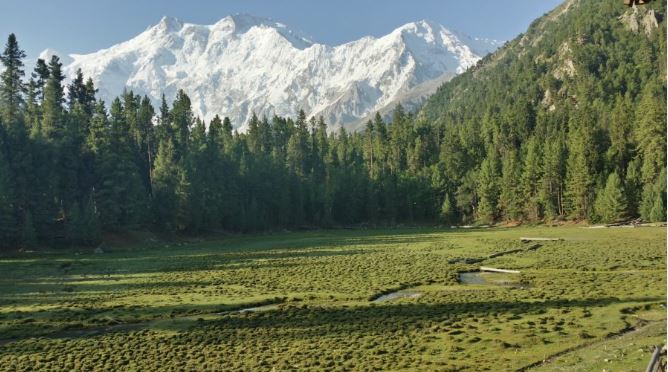
Promoting Clean Energy Alternatives
Providing clean, affordable energy options such as solar panels, biogas plants, and improved cooking stoves can reduce dependence on firewood. NGOs and eco-tourism initiatives are already introducing such solutions in various parts of Gilgit-Baltistan.
Environmental Education and Awareness
Educating local communities, especially school children and youth, about the importance of conservation helps build a sense of responsibility toward nature. Tourists can also play a role by supporting eco-friendly guesthouses and avoiding practices that harm the environment.
Protected Areas and Wildlife Sanctuaries
Establishing and strengthening protected areas, national parks, and wildlife corridors ensures safe habitats for endangered species. Enforcement of anti-poaching laws and support for local wildlife rangers can significantly reduce threats to biodiversity.
3. Waste Management and Pollution
While Gilgit-Baltistan is widely known for its natural beauty and clean mountain air, the region is increasingly facing challenges related to waste management and pollution. As tourism grows and local populations expand, the problem of how to handle solid waste, plastic pollution, and even air and water contamination is becoming more urgent. These issues not only affect the environment but also threaten the long-term appeal of the region as an eco-travel destination.
Solid Waste: A Growing Environmental Concern
In towns like Hunza, Skardu, and Gilgit, as well as in popular trekking areas like Fairy Meadows and Deosai National Park, the amount of solid waste is growing every year. This includes:
- Plastic water bottles
- Food wrappers and packaging
- Styrofoam containers
- Discarded clothing and camping gear
- Leftover food and organic waste
Much of this waste comes from tourists, while the rest is generated by local households and small businesses. Unfortunately, there is no centralized waste disposal system in most areas. Waste is often dumped in open spaces, burned in the open air, or washed into rivers, creating serious environmental and health problems.
Lack of Waste Collection and Disposal Infrastructure
Many villages and even some larger towns lack basic waste management infrastructure. There are few organized garbage collection services, no proper landfills, and limited recycling options. What little effort exists is often underfunded or poorly managed.
As a result, you can often see piles of trash along roadsides, near popular viewpoints, and even inside protected parks. Not only is this visually unappealing, but it also disrupts wildlife habitats and contaminates the soil and water.
Plastic Pollution: A Threat to Nature and Wildlife
Plastic pollution is one of the most visible and harmful forms of pollution in Gilgit-Baltistan. Lightweight plastic bags and bottles are often blown into rivers, forests, and farmlands. Since plastic takes hundreds of years to decompose, it accumulates quickly in the environment.
Impact on Wildlife and Water Sources
Animals like birds, goats, and fish often mistake plastic waste for food, which can lead to serious injury or death. In addition, plastic waste clogs irrigation channels, pollutes streams and lakes, and enters the food chain — creating long-term risks for both animals and humans.
Water sources, which are already limited and glacier-dependent, are also at risk. Contaminated water affects not just drinking supplies but also agriculture and hygiene, which are critical to rural communities.
Air Pollution: An Overlooked but Growing Issue
While Gilgit-Baltistan enjoys relatively cleaner air compared to cities like Lahore or Karachi, certain forms of localized air pollution are on the rise.
Use of Biomass for Cooking and Heating
In many homes, especially in remote areas, people rely on firewood, dried animal dung, or coal to cook and heat their houses in winter. These fuels release smoke and harmful pollutants into the air, which can lead to respiratory problems, especially for women and children who spend more time indoors.
Open Burning of Waste
Without access to proper disposal methods, many communities burn their waste — especially plastic — in open areas. This releases toxic fumes and contributes to air pollution and greenhouse gas emissions. It’s not only bad for the climate but also for the health of those living nearby.
4. Water Scarcity and Pollution
Despite being home to some of the world’s largest glaciers and mighty rivers like the Indus, Gilgit-Baltistan is facing increasing water scarcity and pollution. The region’s fresh water is mainly glacier-fed, and while it may seem abundant on the surface, deeper issues are putting immense pressure on this fragile resource. As climate change, population growth, and tourism increase, so do the threats to the quality and quantity of water in the region.
Glacier-Dependent Water Systems
In Gilgit-Baltistan, more than 80% of the population relies on meltwater from glaciers for daily needs such as drinking, farming, and household use. During the summer months, the melting of glaciers feeds rivers, streams, and irrigation channels across the valleys. However, this delicate balance is now under threat due to rising temperatures and shifting weather patterns.
Unpredictable Glacial Melting
Glaciers are melting at faster rates due to global warming. This leads to short-term water surges, which may cause flooding, but also signals long-term depletion. As glaciers shrink, the water they provide will become less reliable. Some communities already report seasonal water shortages, especially in spring before peak melt begins.
Farmers, in particular, are struggling to maintain crop yields due to inconsistent water supply. Without reliable irrigation, agriculture — the backbone of many rural communities — becomes vulnerable.
Water Pollution: A Silent Threat
While water scarcity grabs attention, pollution of water sources is an equally dangerous but often overlooked problem in Gilgit-Baltistan. Pristine-looking rivers and streams are increasingly contaminated by a combination of domestic, agricultural, and tourism-related waste.
Sewage and Domestic Wastewater
In many towns and villages, sewage systems are either outdated or completely absent. Wastewater from homes often flows directly into nearby streams and rivers without any treatment. This not only affects aquatic life but also poses serious health risks to people who rely on these sources for drinking and washing.
Contaminated water can cause diseases like diarrhea, cholera, and skin infections — especially in areas without access to medical facilities or clean alternatives.
Agricultural Runoff and Chemical Use
As agriculture expands, so does the use of fertilizers and pesticides. These chemicals often seep into waterways, particularly after rainfall or irrigation. The runoff introduces harmful substances into freshwater ecosystems, disrupting fish populations and affecting water quality downstream.
In areas where water is drawn directly from rivers for drinking or irrigation, this poses a serious risk to food safety and public health.
Tourism Waste and Litter
With more tourists visiting destinations like Skardu, Hunza, and Fairy Meadows, the increase in plastic bottles, wrappers, and litter near water bodies is becoming a major problem. These materials often end up in rivers, either through direct dumping or being blown into streams by wind.
Plastic pollution not only affects the scenic beauty of the region but also chokes drainage channels, contaminates fish habitats, and disrupts the natural flow of water systems.
The Social Impact of Water Issues
Water scarcity and pollution are not just environmental concerns — they also create social tensions and economic hardship. In many areas, water access becomes a daily struggle, particularly during dry months or when glacial melt is low.
Gender and Water Collection
In many traditional households, it is women and children who are responsible for collecting water. As water sources become scarce or move further away due to pollution, their daily burden increases. This limits time for education, employment, and other opportunities, deepening the cycle of poverty.
Conflict Over Water Rights
Disputes between communities over access to water are becoming more common, especially in areas where rivers flow through multiple valleys. Without proper water-sharing agreements and infrastructure, these tensions can escalate.
5. The Role of Sustainable Tourism in Protecting the Environment
Tourism in Gilgit-Baltistan has grown rapidly over the past decade, with visitors from across Pakistan and around the world drawn to its dramatic mountains, crystal-clear lakes, and rich cultural heritage. While tourism brings economic benefits and job opportunities, it also puts significant pressure on the local environment — from waste buildup and habitat disturbance to water shortages and carbon emissions.
This is where sustainable tourism plays a crucial role. When done right, tourism can actually help protect the environment, empower local communities, and create long-term benefits for everyone involved — travelers, locals, and nature.
What Is Sustainable Tourism?
Sustainable tourism refers to travel that minimizes negative impacts on the environment and culture of a destination while maximizing benefits for local communities. In Gilgit-Baltistan, this means respecting fragile ecosystems, preserving natural beauty, and supporting the people who live in the region.
The core principles include:
- Conserving natural resources
- Reducing waste and pollution
- Protecting biodiversity
- Promoting local culture and businesses
- Educating travelers about responsible behavior
By following these principles, both tourists and tourism operators can be part of the solution — not the problem.
How Tourism Affects the Environment in Gilgit-Baltistan
Without proper planning and awareness, tourism can become a threat to the environment. Some of the common issues include:
- Littering and waste buildup near campsites, trekking routes, and lakes.
- Water overuse in hotels and resorts, especially during peak tourist seasons.
- Off-road driving and illegal construction that damage fragile ecosystems.
- Disturbance to wildlife from noise, crowds, and pollution.
- Carbon emissions from vehicles and generators.
These problems can quickly undo the natural charm that makes Gilgit-Baltistan so attractive in the first place.
What Tourists Can Do to Support Sustainable Tourism
As a traveler, your choices matter. Here’s how you can contribute to sustainable tourism in Gilgit-Baltistan:
- Respect local customs and communities — ask before taking photos, dress modestly, and support local artisans.
- Pack out what you pack in — never leave trash behind.
- Use eco-friendly gear — reusable water bottles, cloth bags, biodegradable soap.
- Choose accommodations with green practices — solar energy, water-saving, recycling.
- Travel in small groups — to reduce environmental pressure on trails and natural sites.
- Offset your carbon footprint — by planting trees or supporting local conservation projects.
Even small actions can help protect the natural wonders of Gilgit-Baltistan for generations to come.
Conclusion: A Call to Protect Gilgit-Baltistan’s Natural Heritage
Gilgit-Baltistan stands as one of the most breathtaking regions in the world — a land of towering mountains, ancient glaciers, vibrant cultures, and rich biodiversity. But as we’ve explored, this stunning landscape is facing serious environmental challenges. From the alarming retreat of glaciers due to climate change, to deforestation, waste pollution, water scarcity, and biodiversity loss, the region is under growing pressure from both natural forces and human activity. As an eco-conscious traveler or travel blogger, you have the opportunity to be part of this positive change. Whether it’s reducing plastic waste on your trip, staying in eco-lodges, supporting local conservation efforts, or simply spreading awareness — every small step counts.
Let’s keep Gilgit-Baltistan clean, green, and awe-inspiring — not just for us, but for generations to come.
FAQ
Question1. What are the long-term effects of water scarcity on Gilgit-Baltistan’s ecosystem?
Answer. Water scarcity in Gilgit-Baltistan threatens agriculture, wildlife, and communities. As glaciers shrink, water becomes unpredictable, leading to crop failures, biodiversity loss, and resource competition.
Question2. How can sustainable tourism help reduce waste pollution in Gilgit-Baltistan?
Answer. Sustainable tourism practices, like using reusable bottles and staying at eco-friendly lodges, can help reduce waste and protect the region’s rivers and trekking areas from pollution.
Question3. What are the best eco-friendly travel options for visiting Gilgit-Baltistan in 2025?
Answer. In 2025, eco-friendly options include electric vehicles, staying at eco-lodges, and supporting local conservation efforts to reduce your carbon footprint while exploring the region.
